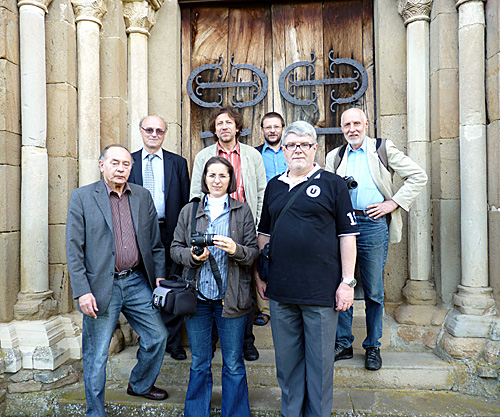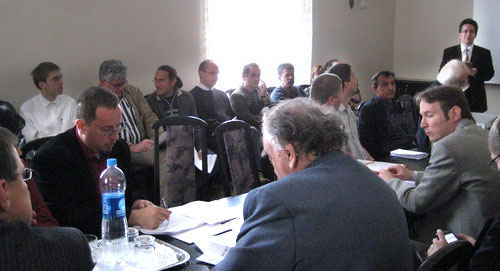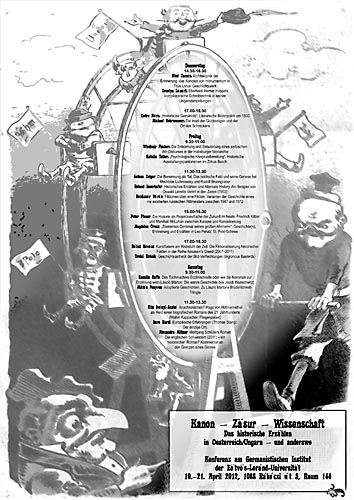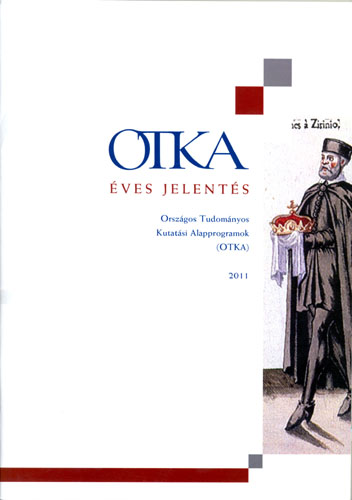
 The 21st session of the Hungarian–Romanian Joint Committee of Historians was held in Sibiu on 28 May–1 June 2012. Lectures were presented concerning the topic Social Structures and Self-identity Strategies. Our institute was represented by Zoltán Szász, President of the Joint Committee’s Hungarian Department, with senior research fellows Zoltán Fónagy and István Tringli. Acting Director General Pál Fodor’s paper was read to the audience in his absence. The hosts were Academician Nicolae Endroiu, President of the Joint Committee’s Romanian Department and Academician Paul Niedermaier, Vice President of the Joint Committee’s Romanian Department. The sessions were held at the Institute of Socio-Human Research (Institutul de Cercetãri Socio-Umane)of the Romanian Academy of Sciences in Nagyszeben (Sibiu). An excursion was also organized for the participants to Resinar, Kis- and Nagydisznód, Kerc and Felsőszombatfalva.
The 21st session of the Hungarian–Romanian Joint Committee of Historians was held in Sibiu on 28 May–1 June 2012. Lectures were presented concerning the topic Social Structures and Self-identity Strategies. Our institute was represented by Zoltán Szász, President of the Joint Committee’s Hungarian Department, with senior research fellows Zoltán Fónagy and István Tringli. Acting Director General Pál Fodor’s paper was read to the audience in his absence. The hosts were Academician Nicolae Endroiu, President of the Joint Committee’s Romanian Department and Academician Paul Niedermaier, Vice President of the Joint Committee’s Romanian Department. The sessions were held at the Institute of Socio-Human Research (Institutul de Cercetãri Socio-Umane)of the Romanian Academy of Sciences in Nagyszeben (Sibiu). An excursion was also organized for the participants to Resinar, Kis- and Nagydisznód, Kerc and Felsőszombatfalva.
The premiere of the volume of essays Nation to Nation… edited by Dénes Sokcsevits took place on June 15, 2012 in the Jakobinus Hall of the Hungarian Academy of Sciences organized by the HAS Institute of History, Research Centre for the Humanities, the Metropolitan Self-Government of the Croatian Minority and the Belváros–Lipótváros Self-Government of the Croatian Minority. The volume summarizes the lectures of a conference in 2008 commemorating the 140th anniversary of the Hungarian–Croatian Conciliation (1868). The audience of the book premiere was greeted in the name of the host by Pál Fodor, Acting Director General of the HAS RCH, while the volume was introduced by literary and cultural historian Csaba Gy. Kiss and the book’s editor Dénes Sokcsevits.

05. 15. 2012.
During the centuries of the Hungarian history there were two noble families who could rise to the throne: the Hunyadi and the Szapolyai family. Owing to the popularity of King Mátyás (Matthias), we know a lot about the first, but we have much less knowledge about the latter, especially compared to their historical importance. The historical significance of the Szapolyai family was provided by their outstanding wealth and political power. In the time of the Jagello (Jagiello) kings, the Szapolyai family could have an own court, politics and diplomacy. Their power was based on their unprecedented wealth (which included 8% of the total of serf allotments of the country) and a well organized institution of familiaritas (a kind of vassality of nobility).
 Boldizsár Vörös, senior research fellow at the HAS Institute of History, Research Centre for the Humanities gave a lecture entitled Fiktionen über eine Fiktion. Varianten der Geschichte eines nie existierten russischen Rittmeisters zwischen 1947 und 1972 on April 20, 2012 at the international conference entitled Kanon – Zäsur – Wissenschaft. Das historische Erzählen in Oesterreich/Ungarn – und anderswo organized by the Institute of Germanistics, Eötvös Loránd University, supported by Action Austria–Hungary foundation.
Boldizsár Vörös, senior research fellow at the HAS Institute of History, Research Centre for the Humanities gave a lecture entitled Fiktionen über eine Fiktion. Varianten der Geschichte eines nie existierten russischen Rittmeisters zwischen 1947 und 1972 on April 20, 2012 at the international conference entitled Kanon – Zäsur – Wissenschaft. Das historische Erzählen in Oesterreich/Ungarn – und anderswo organized by the Institute of Germanistics, Eötvös Loránd University, supported by Action Austria–Hungary foundation.
 Research professor Géza Pálffy, the leader of our Institute’s Early Modern History Research Team led the OTKA (Hungarian Scientific Research Fund) research K 60618 (Hungarian Nobility in the Courts of Vienna and Prague in the 16th Century) from 2006 to 2011, which had the honour of being present in the yearly governmental report on the activities of the OTKA in 2011.
Research professor Géza Pálffy, the leader of our Institute’s Early Modern History Research Team led the OTKA (Hungarian Scientific Research Fund) research K 60618 (Hungarian Nobility in the Courts of Vienna and Prague in the 16th Century) from 2006 to 2011, which had the honour of being present in the yearly governmental report on the activities of the OTKA in 2011.
As a tribute to Ľudovít Štúr, a conference was held on April 24, 2012, at the Slovak Institute in Budapest, organized by historian József Demmel. Slovak and Hungarian historians talked about Štúr’s personality, his life and the age he lived in, and also provided an evaluation of his character and work. Štúr is a controversial historical figure, who was considered an “untouchable saint” by one fraction and a Pan-Slavic rebel by the other.
Page 11 of 12